|
Main
Menu
External
Pages
|
Earth People Magazine
Volume 2 Number 6
Now
Playing: 'Imagine'
By:
Eva Cassidy
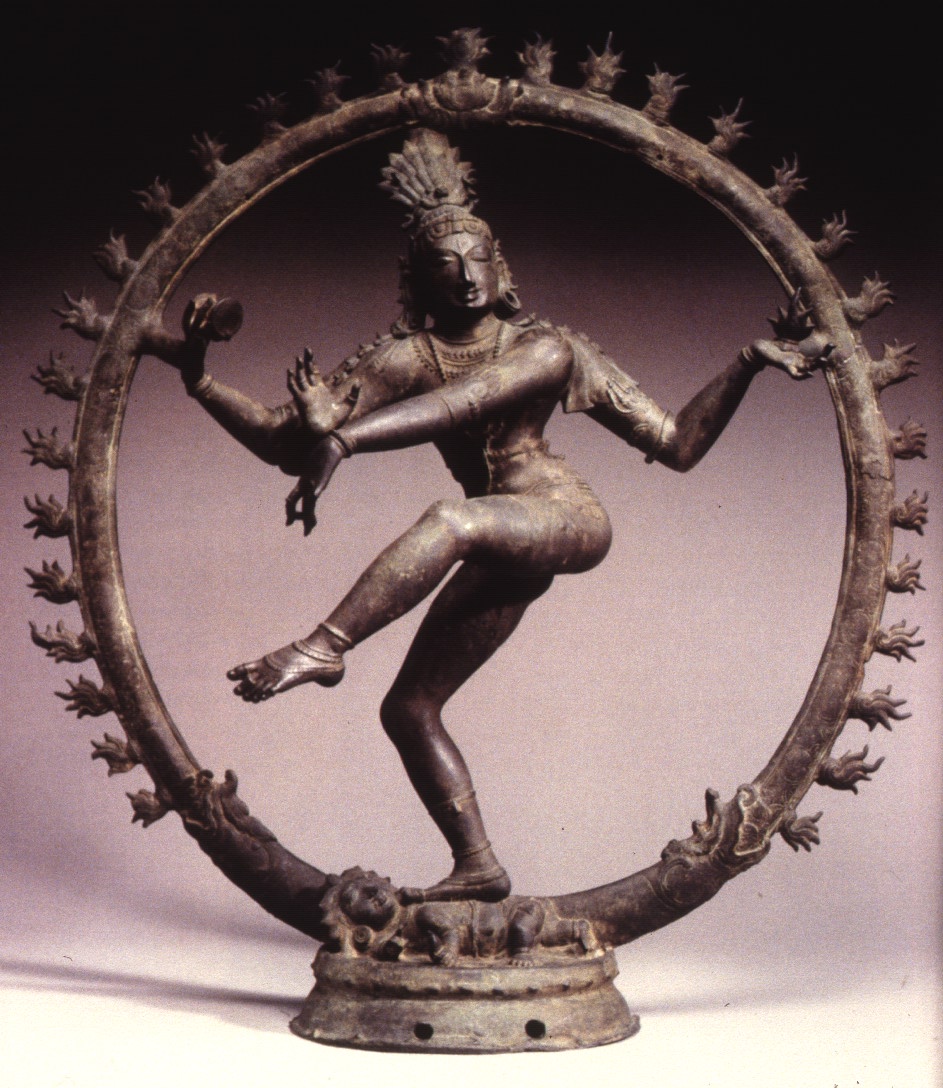
Cover
Picture
'Shiva'
Shiva’s dance is the universe. In his hair is a skull and a new moon, death and rebirth at the same moment, the moment of becoming. In one hand he has a little drum that goes tick-tick-tick. That is the drum of time, the tick of time, which shuts out the knowledge of eternity. We are enclosed in time. But in Shiva’s opposite hand there is a flame, which burns away the veil of time and opens our minds to eternity.
Joseph Campbell
Contents
Grief
By: Lynn V. Andrews
Oneness
By: Flame Morning Star
Life Reborn
By: Pamela Piccoli (C/Moon)
 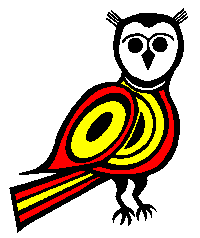
Donations
If you would like to make a donation to Sitting Owl
please use this button.
From Readers
The Mag.
Well let me give you some help here,
Double excel, double, double excel.
Now your magazine shouldn’t have so much trouble to sell.
A Trip of Life
These mushrooms make me hallucinate,
Then I sweat and start loose’n weight.
Till I see dumb shit happen’n,
Dumber than Vanilla Ice try’n to rap again.
By: Laurinda
(aged 13, of Port Fairy)
Sitting Owl's Editorial
It is unfortunate to hear about the September 11 incident, where many of our brothers and sisters have had their physical experiences taken away from them, however it didn’t surprise me. This is because I am aware that as long as society hangs on so tightly to their economic system and allows it to rule their lives, there will be more of this type of incident happen, along with big cleansing fires and floods just to name a few.
I don’t believe in repeating myself, but I feel that the following piece that appeared in the very first issue should be.
The purpose of this publication is to bring people of all races and of all cultural backgrounds together. And to share their experiences and knowledge, so that we can all relearn how to feel the rapture of being alive, and live harmoniously with our earth mother and all the life that she supports.
As it is important to me that the magazine is always of interest to you, I would appreciate any feedback, positive or negative, regarding the types of articles that interest you.
I chose the name ‘Earth People’ because I believe it sums up the way we must all live, for there to be a future for this planet.
Wallace Black, in his book ‘Black Elk - The Sacred Ways of a Lakota’, refers to their way of living as the ‘Earth People Philosophy’, which is much the same as what has been termed ‘The Perennial Philosophy’ or ‘The Way of the Shaman’.
I have found that a true shamanic experience, which can at times be frightening and yet also ecstatic, brings an inner balance and knowing about life rather that a belief. It also brings a sense of peace and bliss, which is your ‘true being’, that comes only when you can live every passing moment without being influenced by any fears, desires, or social duties to live any particular way. It is the life that you and the creator intended.
According to Wallace, earth people are, all humans who live the fundamental, spirit/nature based way of giving sacred reverence to all things at all times. Earth people are steadfast and honest; they know that everything is a circle as created by The Great Spirit, Grandfather, God, or, any other name that refers to the creator of all things.
I have noticed for some time now that our Creator is really testing our unity. While some of us are quite sensitive and receive many messages coming from spirit, they don’t normally understand the symbolic or metaphoric meanings and it is often that they misunderstand them. Others, like myself, understand the symbology, but don’t receive messages easily.
Therefore, we MUST get together for those like myself to help the others to understand the messages they receive. I know that this sounds egotistical, but I can assure you that it is far more honourable and humbling to open up and share your experiences, no matter how crazy they may seem. And I know that in this day and age it is very difficult to know who can, and who can’t be trusted with things that seem so personal, but I know that someone like myself can only prove that they can be trusted when someone begins to trust. Remember that believing is seeing, we see what we believe to be possible. We get to know that a person can be trusted when their actions equate to their promises. So we must all learn to trust, open up, and
share.
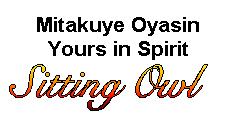 
Suffering and Compassion
Or Sacrifice and Bliss
And Immortality and Eternity
All of life is pain and suffering because the essence of life is the eating of itself, but compassion is the healing principal that makes life possible. Understanding and realising this fundamental nature of life can reduce the added suffering of feeling; “It’s unfair that I should suffer this”.
In his book ‘The Art of Happiness’ the Dalai Lama says that it is our pain and suffering that is the basic element that we share with all living things. And that you and all others are one (God’s Creation), all with desires and a fundamental right to be happy. It is this realisation that strengthens our compassion, which in turn lessens our own suffering. And he says that it is our enemies in life that we must thank for giving us the opportunities to practice patience, tolerance, and compassion, because it is their rash reactions to their own suffering that makes them enemies in the first place.
According to Buddhist tradition, the Buddha realised that the main characteristic of the human condition,
duhkha, is suffering and frustration, which is The First Noble Truth. This is because;
“All things arise and pass away”, as the Buddha said, and the frustration comes by our clinging to these impermanent things, events, people or ideas, which are all Maya – an intellectual concept which has no true reality. The suffering or trishna caused by this clinging is The Second Noble Truth.
The Third Noble Truth, however, states that the suffering and frustration can be ended by transcending
samsara, (the cycles of birth, death, and karma), and then reaching a totally liberated state of consciousness called nirvana. The Buddha’s prescription for this is The Fourth Noble Truth, which is The Eightfold Path of self-development or self-realisation. The first two sections of this path deal with right seeing and right knowing. The next four sections deal with right action, which is The Middle Way, a balance between the pairs of opposites. And the last two sections deal with right awareness and right meditation, which is a description of the direct mystical experience, or shaman’s experience, of reality. This was the Buddha’s doctrine as a means of achieving enlightenment.
Another good system of thought that can help us to understand the stages of life and to happily transcend each step with its painful loss and death of the past stage, is the chakra system of energy centres up the spine. Looking at my chart (Below): The first energy centre is the red chakra at the base of the spine. It can be found in the east where the sun is born each morning and at the Earth below, from which all matter is born. So the energies that are in play at the red (base) chakra are those of survival of the physical body (eating), which is an animal instinct. The second energy centre, going anti-clockwise for the southern hemisphere, is at the level of the sex organs (orange), which needless to say is about sexuality, lust and reproduction; which is also an animal instinct. The third centre is at the level of the belly or solar plexus (yellow), which is all about power, mastery, achievement, and aggression, another animal instinct.
The fourth energy centre however is at the level of the heart (green) and is all about love and compassion, which is a truly human emotion. Compassion literally means ‘suffering with’, and the sentiment of compassion is an echo of violence. The properly human and spiritual birth is a birth from the heart chakra of compassion. Joseph Campbell says that:
“Compassion is the fundamental religious and spiritual experience and if that’s not there, you have nothing… All these symbols in mythology refer to you. Have you died to your animal nature and come to life as a human incarnation” [to live with compassion for all of life, energy, or consciousness,
in other words All Our Relations – Ed.].
Joseph Campbell has also said that compassion is best represented by the basic Buddhist idea of the Bodhisattva. – The one who has woken up and achieved the realisation of immortality, yet voluntarily participates in the fragmentation of time and space, to participate willingly and joyfully in the sorrows of life, including participating with compassion in the sorrows of others.
In the book ‘The Eagle’s Quest’, Fred Alan Wolf recalls an experience with a Native American who spontaneously cured his splitting headache that was due to sinus pain. The Indian had him do some severe stretching exercises that created excruciating pain. After this the Indian asked him how he felt and he said that his muscles were quivering and he was tired. The Indian said;
“No, how is your head?” Fred suddenly realised he had forgotten about his head, and becoming aware of it, he realised that the pain had vanished. He explains it thus:
“My body was a sacrifice to my head pain. By enduring physical pain in my muscles, I was able to release my headache. Perhaps the head pain was released to the universe that way. And perhaps that was the secret to how shamans got rid of their patients’ illness; they too made a sacrifice to the universe.”
IMMORTALITY AND ETERNITY
This mention about immortality, brings me to talk about death and rebirth, this is what I have termed the eighth chakra. There is a lot written about death in all the books I have read on spirituality and life. This is because in death we cannot avoid the realisation of immortality and eternity, of which neither have anything to do with time.
The best image or symbol to explain eternity is the image of the Hindu God Shiva, the lord of the dance of life. Joseph Campbell says:
"Shiva’s dance is the universe. In his hair is a skull and a new moon, death and rebirth at the same moment, the moment of becoming. In one hand he has a little drum that goes tick-tick-tick. That is the drum of time, the tick of time, which shuts out the knowledge of eternity. We are enclosed in time. But in Shiva’s opposite hand there is a flame, which burns away the veil of time and opens our minds to eternity." [See front cover]
At the time of my transformation my mother died. And I realise now that her spirit and the loss itself had much to do with my transformation. But I have also realised that in a way I haven’t lost her at all. My memories of her have an everlasting, immortal, and eternal quality, that at the same time are as real as the day I had each experience with her, both the good ones and the bad ones, which all turn out to be good lessons and revelations.
So it is death that can teach us more about life than life itself. And maybe it was my considering suicide (death or letting go of life) that woke me up to being truly alive like I had never known before. This is the classic symbol of death to the old and birth to the new, as Joseph Campbell says: “From sacrifice comes bliss.” This theme of death and rebirth, or resurrection is found in all mythologies and religions. It indicates that there is an invisible plane of being (life) that is supporting the visible one, and that this invisible self does not end at death, but moves on to the next stage of the cycle.
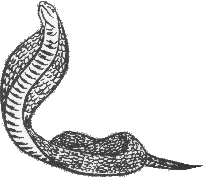 Kundalini Kundalini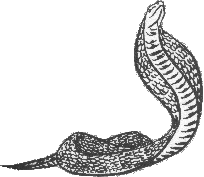
and the Chakras
Excerpts from ‘The Mythic Image’
By: Joseph Campbell
The mind is likened to the surface of a pond rippled by wind…. The idea of yoga is to cause that wind to subside and let the waters return to rest. For when a wind blows and waters stir, the waves break and distort both the light and its reflections, so that all that can be seen are colliding broken forms. Not until the waters will have been stilled, cleansed of stirred-up sediment and made mirror-bright, will the one reflected image appear that on the rippling waves had been broken, that of the clouds and pure sky above, the trees along the shore, and down deep in the still, pure water itself, the sandy bottom and the fish. Then alone will that single image be known of which the wave-borne reflections are but fragments and distortions. And this single image can be likened to that of the Self realised in yoga. It is the Ultimate – the Form of forms – of which the phenomena of this world are but imperfectly seen, ephemeral distortions: the God-form, the Buddha-form, which is truly our own knowledge-form, and with which it is the goal of yoga to unite us.
[Kundalini]… the figure of a coiled female serpent – a serpent goddess not of “gross” but of “subtle” substance – which is to be thought of as residing in a torpid, slumbering state in a subtle centre, the first of seven, near the base of the spine. The aim of the yoga then being to rouse this serpent, lift her head, and bring her up a subtle nerve or channel of the spine to the so-called “thousand-petalled lotus”
(sahasrara) at the crown of the head…. She, rising from the lowest to the highest lotus centre, will pass through and wake the five between; and with each waking the psychology and personality of the practitioner will be altogether and fundamentally transformed.
Chakra
1, [RED Editor],
Muladhara, the “Root Support”, is located at the base of the spine. The world-view is of uninspired materialism, governed by ‘hard facts’… and the psychology, adequately described in behaviouristic terms, is reactive, not active. There is on this plane no zeal for life, no explicit impulse to expand. There is simply a lethargic avidity in hanging on to existence; and it is this grim grip that must finally be broken so that the spirit may be quit of its dull zeal simply to be….
The first task of the yogi then must be to break at this level the cold dragon grip of his own spiritual lethargy. And to release the jewel-maid, his own
shakti, for ascent to those higher spheres where she will become his spiritual teacher and guide to the bliss of an immortal life beyond sleep.
Chakra
2, [ORANGE],
Svadhisthana, “Her Special Abode”, is at the level of the genitals. When the Kundalini is active at this level, the whole aim of life is in sex. Not only is every thought and act sexually motivated, either as a means toward sexual ends or as a compensating sublimation of frustrated sexual zeal, but everything seen and heard is interpreted compulsively, both consciously and unconsciously, as symbolic of sexual themes. Psychic energy, that is to say, has the character here of the Freudian libido. Myths, deities, and religious rites are understood and experienced in sexual terms.
Chakra
3, [YELLOW],
Manipura, “City of the Shining Jewel”, is located at the level of the navel. Here the energy turns to violence and its aim is to consume, to master, to turn the world into oneself and one’s own. The appropriate Occidental psychology would be Adlerian of the “will to power”: for now even sex becomes an occasion, not of erotic experience, but of achievement, conquest, self-reassurance, and frequently, also, revenge.
All three of these lower chakras are of the modes of man’s living in the world in his naive state, outward turned: the modes of the lovers, the fighters, the builders, the accomplishers. Joys and sorrows on these levels are functions of achievements in the world “out there”, what people think of one, what has been gained, what
lost. [These chakra energies are those that we share with the animals.
Editor.]
A religion operating only on these levels, having little or nothing to do with the fostering of inward, mystical realisations, would hardly merit the name of religion at all. It would be little more than an adjunct to police authority, offering in addition to ethical rules and advice intangible consolations for life’s losses and a promise of future rewards for social duties fulfilled.
Chakra
4, [GREEN],
Anahata, meaning “not hit”, is at the level of the heart. It is the beginning of the religious life, the awakening where the new life begins, and its name refers to the sound that is not made by any two things striking together. All sounds that we hear are actually made by two things striking together. It is the sound of the energy of which the universe is a manifestation.
The heart
chakra, then is the opening of the spiritual dimension: all is metaphoric of the mystery… When you reach the upper
chakras, you don’t do without the first three: survival, sex and power. You don’t destroy the first three floors of a building when you get to the fourth.
Chakra
5, [BLUE],
Vishuddha, “Purified”, is at the level of the larynx [throat]. This is the chakra of spiritual effort to hold back the animal system from which the energies come. One has gone through the lower chakras to get to here, but the pelvic chakras have not been rejected. They now have to be turned to a spiritual, rather that physical, aim.
Chakra
6, [INDIGO or PURPLE],
Ajna, the lotus of “Command”, located between the eyebrows, is what we would call the chakra of heaven, the highest chakra in the world of incarnate forms… When the Kundalini has reached this point, one beholds God. Any god you have been meditating on or have been taught to revere is the god that will be seen here. This is the highest obstacle for the complete yogi… Meister Eckhart said, “The ultimate leave-taking is the leaving of God for God.”… At Chakra 7, you go past God and are in the transcendent: “Brahman without characteristics”.
[The impersonal God, or Great Mystery.
Ed.]
Chakra
7, [VIOLET or WHITE],
Sahasrara, “Thousand Petalled”, is the lotus at the crown of the head. At this chakra there is no person to be conscious of God. There is only undifferentiated consciousness: the silence [out of which all life comes and returns]. When you hit Chakra 7, you are inert. It is a catatonic knockout, you might say, and you are reduced simply to a thing.
Now as I see it, if you come back down to the heart, to Chakra 4, where spiritual life begins, subject and object are together.
Chakra 1 corresponds to 7. The inertia from Chakra 1 sets in when you have hit Chakra 7.
Chakra 2 corresponds to 6. Chakra 3 corresponds to 5. You are then able to take the war energy from Chakra 3 and practice self control in Chakra 5. So you can bend things at Chakra 4.
For example, through the experiences of Chakra 2, if they are of love, you are really experiencing the grace of God in Chakra 6. You transmute the lust energy of Chakra 2 into love. If there has been no experience of the discipline of Chakra 5, you’ll never get an inkling of what it is you are to be experiencing through the physical [act]. If in your physical love, you can realise that what you are touching is the grace of the divine in its proper form for you, this is a translation of carnal adventure into the spiritual, without the loss of the carnal. The two are together. You are then beholding the god as in Chakra 6 and experiencing the beloved as a manifestation of that divine power, that love which informs the world.
Joseph Campbell
Back
to ContentsTop of Page
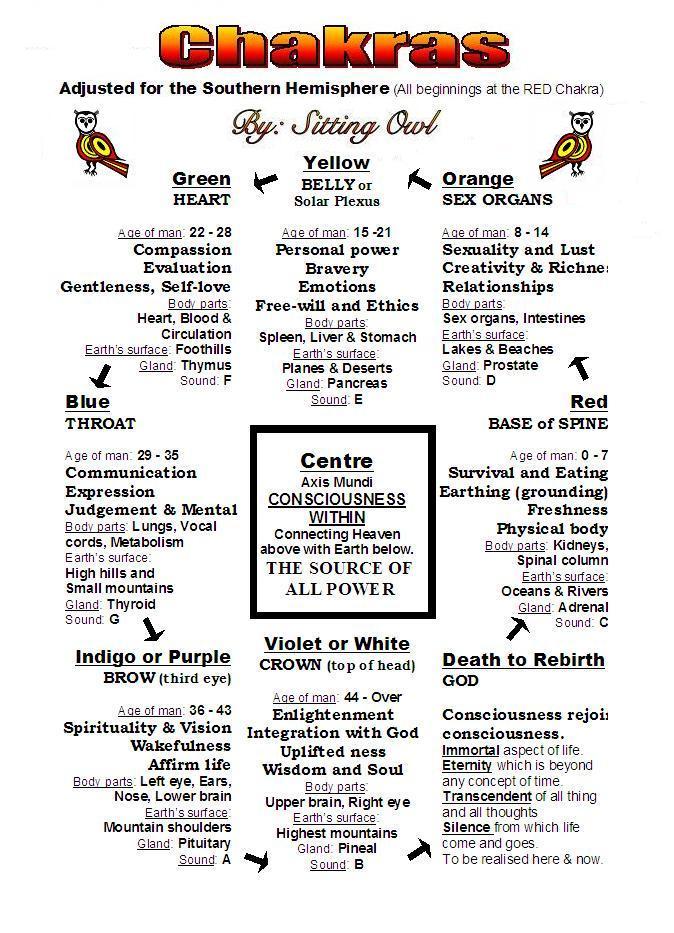
 
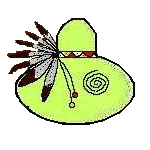 Grief Grief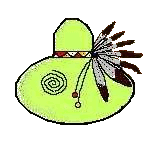
By: Lynn V. Andrews
Grief deepens you. It allows you to explore the perimeters of your soul. Grief is the only gateway to certain levels of consciousness, and it is a hard taskmaster. Through grief you can explore every aspect of your dark side – anger, pain, abandonment, terror, loneliness; and these are aspects of the sacred wound that in our daily lives we usually try to ignore. Grief forces you to look at those parts of yourself that are not yet healed. If you can look at grief as a teacher in this life, but if looked at properly, with awareness and an open heart, it is one of the greatest teachers of all. The seeds of wisdom and enlightenment are planted within the wounds of grief. What is lost can only come back to us again in higher ways.
So much of life involves suffering and loss, but great strength is brought to us through grief. You can choose to learn from the experience and remain soft and kind, or you can choose to become hardened and cynical. Do not miss the lessons you are here to discover, even in grief. The weeping Buddha, the symbol of the shaman going deeply within himself, into the depths of his grief, holds grief in his hands before a picked rose. The rose sits upon a stone altar on a bed of seaweed at the shore. The tide has gone out, symbolising the elimination of desire. Final transcendence is at hand. The rose is one of peace, in the understanding that sadness and grief are only one side of a double-edged sword. The other side is peace, joy, tranquillity, and the understanding that we all are one.
This is a teaching of the west, because grief takes us into deep, reflective thought, delving into our unconscious life to find the strength to transcend. In every death there is rebirth and transformation. Do not be afraid to learn the lessons that are to be found in grief.
Printed with permission from:
‘The Power Deck’
 ONENESS ONENESS
By: Flame Morning Star
REMEMBER,
You Are Me
I Am You
We are the wind.
We are the rain, We are the sun, the earth.
We are the stars that shine,
We are brilliance.
We are part of the whole.
We are ONENESS.
Each together. Each apart,
We must find our wholeness first.
To connect to our other selves
TREES, PLANTS, ANIMALS, INSECTS,
EARTH, AIR, FIRE, WATER,
ONCE A TRICKLING BROOK,
NOW A FLOWING RIVER,
We are I am
 Shamanism – The Course Shamanism – The Course
I know I have skipped question three, there is a reason, and it will appear in the next issue.
Question 4. Why can shamanic ideas help to understand and deal with bereavement?
The Goldi shaman calls on spirit helpers for guidance whilst accompanying the dead person, and locates relatives of the deceased, so that the newly departed soul is safely accepted.
Evenk shamans also accompany the souls of the dead to the underworld, where the deceased leads a life much like the life they left behind.
Gombuhu, a Mongolian shaman, explained that in addition to the body, we have three souls. Just as there are three worlds – this world, the upper world, and the lower world – so a person has three souls. The suld soul lives only in this world. It is a unique soul because it has no past life experiences, and so it develops the character that makes the person different from other people. You cannot be without a suld soul to be alive. After a person dies, their suld soul returns to nature. It stays near the body for a time, and after many years – eight or more generations – it becomes a nature spirit. The ami soul in ways is a creature of the upper world. The ami soul is what makes the body breathe. After death, it flies in the shape of a bird and roosts in the branches of the World Tree. After a time, ami souls reincarnate. They are often born back among their friends and relatives. The suns soul belongs to the lower world, and sometimes visits humans as a ghost. The suns soul also reincarnates after death. The traditional shaman can communicate with the dead, which lessens the fear for the community.
Shamanic ideas can be helpful in understanding, dealing with, accepting and preparing for death.
Sometimes a soul will only need to bounce off earth – maybe take one or two breaths before leaving the planet – to experience the density of this earthly incarnation. There is no separation, one can tune in to the bigness of the deceased, their higher self, without jeopardising their journey, by keeping true to the intention that they be free. One can still give love, comfort and protection, to transform into energy for the deceased to do whatever they needed to. The challenge is to open to experience multi-dimensionality, your soul self and of the deceased. If you do this faithfully, and monitor and reject negativity, you will experience levels of awareness never felt before, an inner experience such as you never had before. Be sensitive to the light and the light growing in you, as this then releases loved ones to get on with their appropriate experiences. Your special relationship with the deceased will move into a transcendental position. You can become a teacher to others as you become more sensitive to light and more in touch with your own light, more and more in touch with dimensions beyond the human. Be disciplined in ending each day, focusing on what there is to be grateful for, and you will find this practice extraordinarily uplifting and healing. Realise that they have learnt all they came to learn, done all they came to do, and are pursuing their soul journey in other dimensions.
There is a time for grieving and a time for letting go. Many healers teach that in the three days following death, the soul, or spirit body, or etheric body as some call it, gradually releases its hold on the physical body, to which it has been attached by a silver cord. Normally it takes about three days for that cord to sever. If we try and hold on to the person who has died, it can seriously impair their ability to “lift off” from the material plane. This can be very harmful and painful for the departed soul.
In dealing with grief, it is helpful to remember and work with the knowing that, like everyone else you are greater than grief, greater than any role or identification, other than the identification with wholeness that is the Self.
When Native Americans want to contact someone who has died, they make a medicine pouch and put something inside that belonged to that person, hang it close to the heart and breathe through it.
Death is something not to be feared, as it is a right of passage, to be embraced, knowing we have done all we came to do in this lifetime, and comforting to know we can be with our loved ones in other life times. Life does not end here on earth. This is not simply what the shamans tell us, those who understand the hidden things, ordinary people who know how to dream have many times seen that the dead appear to them, just as they were in life. Our spirit is altogether indestructible and continues from eternity to eternity. It is like the sun, which to our eyes seem to disappear beyond the horizon, while in actual fact it goes on shining continuously. In the words of Ernesto Alvarado, Apache shaman, “When we die we’re going to change. The energy’s going to change. But its going to go on, ‘cos it’s the Life Force. We came from there. We feel that in ourselves. That energy is going to go on. It’s in the shell. The shell is not me. The shell doesn’t define me. It just holds me together for now.”
Sitting Owl’s Comments
Most of what you have written is beyond my own experience, but it sounds like one person's explanation of some of Creators mysteries, which can only be explained in symbolic, metaphoric form, and should not be taken too literally. For example, a sentence like: “Evenk shamans also accompany the souls of the dead to the underworld, where the deceased leads a life much like the life they left behind.” One might assume that this is physically happening, and where is this underworld?
It sounds like journey to the centre of the earth.
Gombuhu is obviously describing, as best he/she can, the movement of consciousness.
The wakeful conscious mind
(suld soul) lives in the middle world, the actual soul, spirit or higher conscious
(ami soul) lives in the upper world, and the body conscious, unconscious, or subconscious (suns soul) lives in the lower world.
Remember that love is energy and the receiver can transform it into whatever they choose. Being sensitive to the light is really a case of giving love and thanks at all times, and seeing the light (love, beauty etc.) that is in the darkness, as in the duality of pairs of opposites, remembering that all things are actually both.
These “dimensions” are beyond the physical human, not the human spirit. Not everybody experiences a silver cord, as the cord is consciousness. Many more of my ticks are in the margin here but remember that wholeness, which is the true self, is also God. And remember that eternity has nothing to do with time.
 
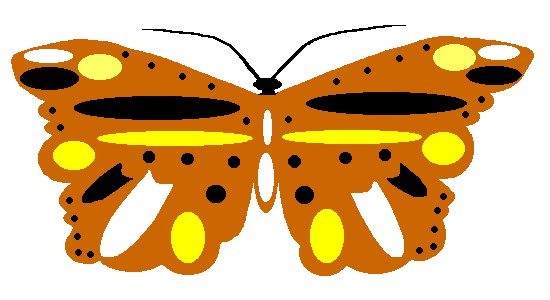 Life Reborn Life Reborn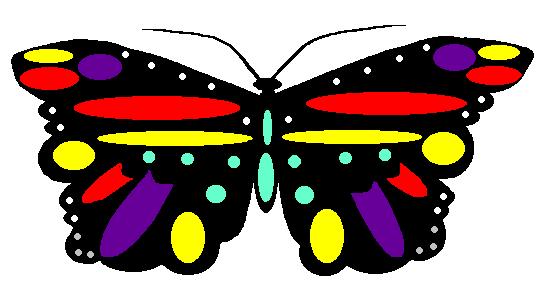
By: Pamela Piccoli (C/Moon)
Like a bulb
The flower dies
It is still there
You can only see its dead leaves
Again nothing
It is renewed
Regenerates its beauty
First its leaves
Come up
Then the flower
The main life force each year
Life reborn
It continues on
A death, the flower
Rebirth
Rites of Passage
As this subject, that can also be called ‘The Hero Adventure’, is related to the general theme of this issue of sacrifice and bliss, I have decided to write more about it.
In
Volume 1 Number 2 I wrote a brief introduction on this VERY IMPORTANT aspect of life in my article ‘Initiations and Vision Quests’. It is so important that Joseph Campbell’s first book that he wrote, ‘The Hero with a Thousand Faces’, was solely on this subject. And it is, in fact, the beginning of all life, as we are all heroes in our birth; and the seeking of a spiritual understanding of life that often comes around middle age is another of the major hero adventures that we experience during the passage through a lifetime.
I recently read two articles on this subject that appeared in respected journals written by David
Tacey, a doctor of Philosophy at Latrobe University. I was amazed to see that these articles appeared in 1995 and 1997/8, and although if read and understood by society it could solve possibly all of our problems, yet today the problems still persist. All I can say is; is anybody listening out there?
To refresh your memory of my previous article or to give a brief overview to those who have not read it, the main points are as follows.
Joseph Campbell calls this psychological transformation, which everyone must undergo, the "Hero Adventure." This is where a hero or heroine finds or does something beyond the normal range of experience. There are three stages to this adventure, and they are:
1.
Leaving home or separation from all that is familiar.
2. The frightening and difficult, but also exhilarating journey often helped by unexpected and mystical allies. Facing fears and a new way of consciousness, as the known boundaries of the old consciousness fades and merges with new revelations.
3.
Returning as apparently the same person, but forever changed. Where a deed has been achieved.
The deed comes in two forms. It is either a courageous act of saving a life or lives, going through a physical or psychological ordeal, or it is a spiritual deed of coming back from spirit realms with a message that can help humanity or society in some profound way.
The rites of passage then, are the celebrations that Lynn Andrews speaks about in the next article, ‘Rebirth of the Self Lodge’. They are the celebrations within the whole community of these returns from the hero adventures, and the recognition of the shared importance of the revelations with which each individual hero has returned.
It is this return that David Tacey points out in his two articles, ‘Rites and Wrongs of Passage’ and ‘Youth Spirituality and Authenticity’, saying that the return often doesn’t happen; and he connects this phenomina to society’s drug problems. And the following is a supplement to ‘Rites and Wrongs of Passage’, which describe the main points in that article:
Rites of passage, which are the soul’s evolution by incremental changes in consciousness, involve:
Separation from the existing, limited awareness (Childish).
Transition into a hazing period.
Return of the self into a big picture awareness (Maturity).
1.
If culture does not help young people come to terms with age related changes in personal orientation, then the soul itself is forced to carry the burden of transformation.
2.
If culture and society do not actually respect or conduct life cycle rituals, then the initiatory process will take place anyway, despite the absence of formal recognition.
3.
Today’s undirected self-initiations remain problematical precisely because they lack the guiding hand of cultural wisdom
[The understanding of the messages of mythology.
Ed.] and informed adults.
4. When the soul gives the urge for change it does not provide the rational understanding, the culture is supposed to do that.
[Via mythology.
Ed.]
5. Young people are thrown back on themselves, and they cannot always be expected to respond positively to the archetypal dictates and urges of the soul, especially when these urges remain unconscious and are presented to the ego [conscious mind] in symbolic and non rational form.
6. Ad hoc attempts at initiation can get stuck in not being fully realised and experienced, because the urges of the soul are misunderstood and even condemned and opposed by society at large. So young people, charged by youthful idealism, rebellion and the natural deep urge of the soul can be caught in being forced to frequently act it out in negative
re-occuring cycles such as risk taking behaviour and drug addiction.
Given some of these insights by David
Tacey, the real reasons for drug addiction can be more easily understood, by exploring the effects of the rites of passage denied in the next section.
Drug Addiction and the Rites of Passage Denied
The evolutionary, sacred urges of the soul are relegated to the profane and sordid margins of social experience, because modern culture has failed to address a basic primal urge, the need for ecstasy and transcendence.
The rites of passage incorporate ecstasy as the new frequency of enlarged awareness. This enlarged awareness is not wanted by the adult world, which sets about to limit it, and in so doing creates sickness of the soul in its young people. Rites of passage thwarted by society create pathological behaviour in its young people. Society’s drug prohibition efforts have failed because they do not address the deeper issue, the urge of the soul, which is the propelling energy and why young people take drugs.
1.
Drugs serve to separate them from normal society, into the sense of being an outsider, participating in an illegal activity. This fulfils the soul’s need for separation, even if it is only psychological and not physical
[or spiritual.
Ed.].
2. Drugs create a transition away from normal conscious reality into a hazing between what was the old awareness and what the new soul perception experiences. This reinforces to the soul the fact that the journey has begun with a real sense of transition because of departure from the old existing awareness.
3.
In the transition phase, young people find that drugs dissolve the boundaries of the former self. And they encounter a hazing, which releases them from the confined consciousness they were trying to separate themselves from, and into an ecstasy and a wider ecstatic experience which links them to the bigger picture of themselves and the world. This “high” satisfies the urge of the soul for transition.
4.
The return stage of the soul’s journey is marred by the nightmare of a return into an imperfect world, which rejects their soul’s experience of ecstasy. Rather than society understanding, acknowledging and assisting them into the process to integrate this new awareness, it exiles them further as criminal outsiders.
5.
The return stage, in many instances never happens because of cultural prejudice and hostility. Permanently and psychologically exiled from society and the opportunity to develop a new mature self, these young people seek that which satisfies them the most, the “high” of ecstasy, the place where their soul felt good.
6. Young people return to the hazing stage and remain stuck in it by habits of addiction to kill the emotional pain of depression resulting in dissatisfaction with the world and their immediate relationship to it. Adults, rather than treating them as people on a hero’s journey, reinforce the return to the hazing by rejection. This rejection creates soul sickness.
7.
The new awareness, still trapped in transition, has no opportunity to return, and is not given the practical opportunities to grow into a new self by lack of place, purpose, position and fulfilment in society. Having departed, the soul cannot return and complete the cycle, and so engages indefinitely in repeated attempts to dissolve the self in drugs or suicide. The only remedy from this is cultural awareness, understanding and assistance in the return phase of rites of passage.
So maybe now you can see why I feel it is so important for society to understand and implement any and all of the mythological messages, which are actually all the same message. And all mythologies contain this pedagogical function. As I have pointed out in the article
‘Dreams, Mythology and Symbolism’ of
Volume 1 Number
3, myths serve four functions, which are:
1/
The Mythical Function, realising the wonder of the universe, and the wonder of yourself as a living symbol of the Creator. “If mystery is manifest through all things, the universe becomes, as it were, a holy picture. You are always addressing the transcendent mystery through the conditions of your actual world.”
2/ The Cosmological Dimension.
This is today the concern of science, to show the shape and nature of the universe. But it must be shown in a way that still allows the mystery and the experience of awe to come through.
3/ The Sociological
Function, where the myth is supporting and validating a certain social order. This is where myths vary from one place to another and from one culture to another. According to Joseph Campbell, it is this function that has taken over in our current world, and is out of date, in all the pages and pages of rules on how to behave and what you should wear etc.
4/ The Pedagogical Function.
This is the function that everyone must try to relate to, and gain from the wisdom of nature, realising the brotherhood we have with plants, animals, minerals and all living beings of the universe. This function of myths is the one that can teach us how to live a human lifetime under any circumstances, as it teaches us the stages of life from birth through maturity and death to rebirth.
And as
Leunig, the cartoonist, has said:
“It is difficult to accept that life is difficult; that love is not easy and doubt and struggle, suffering and failure are inevitable for each of us. We seek life’s ease. We yearn for joy and although we may find these in abundance we also find ourselves lying awake at night possessed by the terrible fear that life is impossible. When we least expect it we are overwhelmed by a massive sense of loneliness, misery, chaos and death: appalled by the agony and futility of existence. It is difficult to accept that this darkness belongs naturally to our human condition and that we must live and bear it. Nature, requires that we have the darkness of our painful feelings and that we respect it and make a bold place for it in our lives. Without its recognition and acceptance there can be no true sense of life’s great depth, wherein lies our capacity to love, create and make meaning. The feelings of light and darkness must cross-pollinate and inform each other and so the soul be enlivened and strong.”
 Rebirth of the Self-lodge Rebirth of the Self-lodge
By: Lynn V. Andrews
(Excerpt from: WOMAN AT THE EDGE OF TWO WORLDS Workbook –
Menopause and the Feminine Rites of Passage)
Menopause is a time of celebration. The main teaching of the sacred gourd is to celebrate what you have become. Then you give rebirth to yourself within your gourd-like womb through celebration and ceremony. Celebration is an interesting word, because it implies that you are alive and existing totally and completely within the moment. To celebrate what you have accomplished in your life, to celebrate who you are, what the meaning of your life is, is to stand in the moment, in the centre, equidistant from all positions on the perimeter of your sacred circle. And to proclaim to the world that you are something special, that you have survived in a way that has promoted your life and the life of others. Just simply to have lived through the past few decades is a statement of your power, your ingenuity, and your integrity. We are living through difficult times, times that stress us beyond what my teachers say that human beings should experience. We are all extraordinary powerful beings, who through our love for the goodness of the universe and the light that lives within each of us have survived. And we should be ultimately proud of that extraordinary accomplishment. We are indeed warriors and warrioresses of the twentieth century, shamans in the making, building our way toward enlightenment and new fields of energy and the perfection of play.
Since celebration is such an integral part of this teaching, I would like to spend some time talking about the act of celebration, how, for instance, you celebrate your life in reality. How do you accomplish such a feat? Perhaps this is an idea that is new to you. So many people that I speak with talk about becoming, they talk about healing, talk about recovering. But they have never seemingly become what they speak of. They never seemingly have healed themselves and never seemingly have they recovered. Understandably so, because in a lot of ways, we never get to a position where we feel totally complete, because life is a process of learning, of presenting new mirrors to ourselves and others so we can facilitate growth.
Nevertheless, there are plateaus within the process of learning. The gateway of menopause marks one of those plateaus. Because of the sacred gateway opening last year; because of what people have described as the Kaliugas in India; and what the native people have described as prophecies that have unfolded throughout the history of time, this is in turn a period of history where energy is shifting and opening. But because so few of us have teachers who describe energy as a process of life, we are unfamiliar with these ideas. To us, so many of us, life is just life. The moment we are born, we forget who we really are. We forget that we come here onto this earth walk to become enlightened, that life is a process toward the ultimate light. It is the growth of a great seed that is planted. Your life is an extraordinary tree, the flowering of which, my teachers have told me, is really the process of death. You cannot live without one eye toward the goal of this life, which is death indeed. Death is the opening and the ushering of your spirit into the greater mystery, which makes all of life understandable, but to get to that point, there are plateaus, as I have said. These plateaus are celebrations for what you have become, which is your sacred lodge of the self.
The dome of the sacred lodge, or your higher ceremonies [the highest branches of the tree of life], are only safe and effective to do when the foundation is rooted in bedrock.
 
I am also
available 24 Hrs For:
Life and Energy Counselling.
Dream and Vision Interpretations.
Shaman Stone and Medicine Card Readings.
Shamanic Studies.
Mythology Studies.
Spirit Journeys.
Vision Quests.
Stone-people (Sweat) Lodges.
Meditation.
Chakras and Auras.
Healing the Healer.
Understanding Vibration, Manifestation and Quantum Physics.
All manner of spiritual cleansing, making sacred space, and sacred
ceremonies.
 
Donations
If you would like to make a donation to Sitting Owl
please use this button.
|